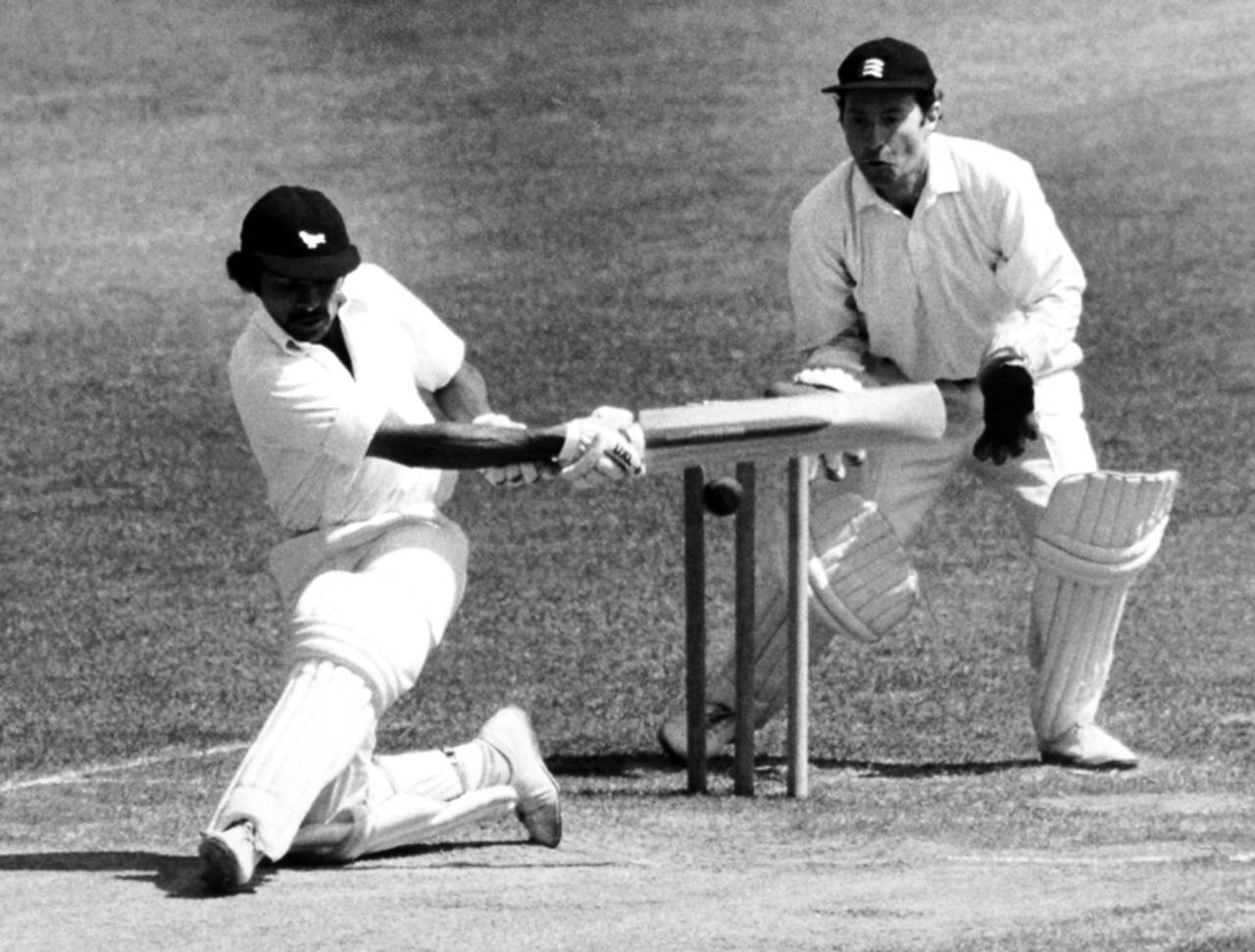The English county cricket season has cranked creakily into gear. Sparsely filled grounds have seen the reappearance of that quixotic creature, the county cricketer. The more fortunate among them have returned, like migratory birds, from southern winters. One and all, they have donned thick sweaters against crisp April mornings, rubbed life into cold hands, and taken to the field.
Kumar Sangakkara has started his latest stint in county cricket in imperious fashion, carving out a century and a fifty in swift order. In so doing, he has joined the long line of Sri Lankan cricketers who have graced county cricket, stretching back almost a hundred years. There have been some towering characters among them.
The first on the list came with the resplendent name
Churchill Hector Gunasekara. He had attended Cambridge University to study medicine, missed out on a Blue due to the outbreak of war, and consoled himself with a three-year career for Middlesex between 1919 and 1922.
Gamini Goonesena, that rarest of beasts, a legspinning allrounder, played for Nottinghamshire in the 1950s, until his transfer to Canberra in the diplomatic service, whereupon he promptly made his way into the New South Wales team. From those early players down to the modern greats - Muttiah Muralitharan, Aravinda de Silva, Sangakkara himself - Sri Lankans have brought flair and flamboyance to the county game. But when I reflect on Sri Lankans in county cricket, I am drawn ineluctably to
Gehan Mendis, the man who fell between two stools.
Mendis was an attacking right-hand opening batsman who played for Sussex and Lancashire between 1974 and 1993. He scored over 21,000 runs, with 41 centuries and over 100 fifties. His is a bittersweet story. For a Sri Lankan in the seventies, Mendis was tall and strongly built. With his trademark Bollywood-baddie moustache, he was instantly recognisable around the county scene. He made his reputation as an accomplished player of fast bowling - a useful asset in the era of West Indian pacemen. His Lancashire team-mate Ian Austin described him as "the finest player of fast bowling I have ever seen", a considerable accolade considering the Lancashire dressing room contained
Michael Atherton,
Graeme Fowler and
Wasim Akram.
Mendis was not some amateur, playing cricket with Corinthian motives; cricket was his job. Sri Lankan cricketers of Mendis' generation could not hope to make a living playing cricket for and in Sri Lanka
Mendis emigrated from Sri Lanka with his family when he was 12. His cricket education started at St Thomas' in Mount Lavinia, and was completed on the green fields of England. He played for England Schools, in a team whose batting line-up contained
Vic Marks (Somerset and England),
Paul Parker (Sussex and England),
Chris Tavaré (Kent and England),
Nigel Briers (Leicestershire), and
Alastair Hignell, who played cricket for Gloucestershire and rugby for England. From there, Mendis joined Sussex, whom he served for 12 years, before moving to Lancashire, where he finished up in a benefit year in 1993. During his career he won five competitions, two with Sussex and three with Lancashire. He passed 1000 runs in a county season numerous times. But he never received an international cap.
In some regards, Mendis fell between two stools, two countries no less, and suffered as a consequence. When he started his county career, Sri Lanka was not a Test nation. Mendis had a difficult choice when, halfway through his career, Sri Lanka did gain full status. At the age of 14, a proud cricket-mad Sri Lankan, I could not understand his hesitation. How could anyone turn down a chance to stride onto a Test ground for the country of one's birth? And what a boon someone with Mendis' experience in professional cricket would have been to a nascent and amateur Sri Lankan team.
My father, characteristically, supplied the answer. Mendis was not some amateur, playing cricket with Corinthian motives; cricket was his job. Unlike the fortunate stars of today, Sri Lankan cricketers of Mendis' generation could not hope to make a living playing cricket for and in Sri Lanka. Mendis was reliant on county cricket, and he played in the heyday of overseas county cricketers. At Sussex, he played with Imran Khan and Javed Miandad. Elsewhere, Viv Richards and Joel Garner, playing in tandem for Somerset, led a multitude of Caribbean talent. Zaheer Abbas, the Asian Bradman, was busy compiling his century of centuries. Had Mendis elected to play for Sri Lanka, he would have had to compete with these and other luminaries for the few spots available for overseas players in county sides.
At the same time, he was widely tipped to be selected for England.
Graham Gooch, no less, anointed Mendis as his successor, when he was banned for participating in the illegal tour of South Africa. That temptation, coupled with concerns about the effects of playing for Sri Lanka on his livelihood, must have been hard to resist.
As it was, the gods of selectorial caprice did not smile favourably on him. Mendis skirted the fringes of England selection for a number of years, without winning a call- up. The Sri Lankan set-up moved on, and Mendis' career came to an end without an international cap of any hue. Of all sad words of tongue and pen, the saddest are these: it might have been.
